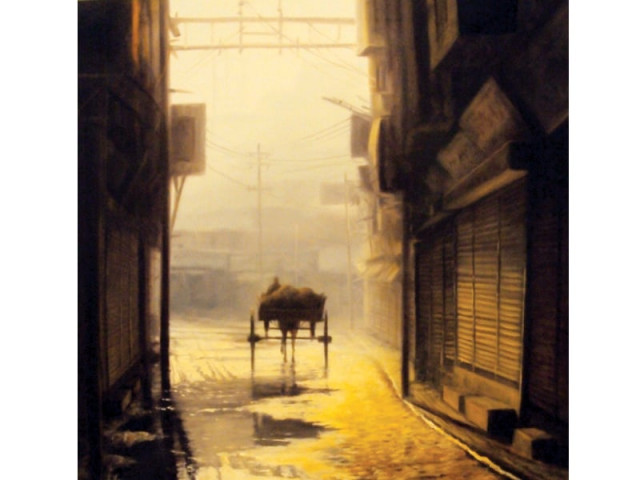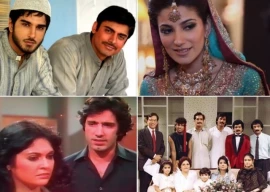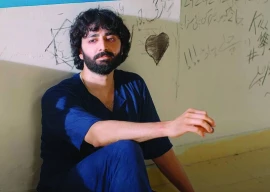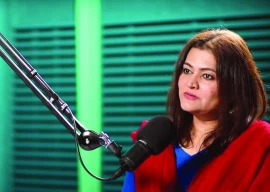
With landscape art we approach verisimilitude — observing truthful depictions of environment and reality: sweeping vistas, open fields of grain, mountainous terrain and cotton candy clouds rolling across an azure sky. Yet there’s an inherent danger to this school of art: the paintings turn dull and static without a greater context or something else to hook viewers beyond the simplicity of landscape.
Zulfiqar Ali Zulfi’s recent exhibition at Tanzara Gallery in Islamabad, thankfully, brings more to the canvas than dry scenery. “Zulfi is a realist painter but his paintings, be they landscapes or cityscapes, are more than imitations of what is seen,” says Noshi Qadir, curator of Tanzara Gallery.
Viewers agree that his work imbibes a quiet spirituality, a Punjab-centric mysticism that adds leagues of depth to his oil-on-canvas depictions of the province’s fertile terrain and Lahore’s dust-spangled alleys. “It’s the Punjab landscape that interests me,” says the artist. “I come from the realistic, Lahore school of thought, which is based on realistic art and landscapes.”
More specifically, it’s a certain quality of light, a je ne sais quoi, which occupies Zulfi’s palette, oscillating between the gossamer auras of early morning and the romantic tones of evening. “Early or late light is very beautiful because the colours of the scene are rich,” explains Zulfi. Coupled with enigmatic hints of mist, Zulfi’s renditions provoke a feeling of spiritual potency within viewers — made all the more vivid by his formidable technical skills inculcated at the National College of Arts (graduated 1989).
The use of liminal periods (intermediate states; in-between worlds) makes readers feel aware of transitory space; of time zones that mark thresholds between night and day, darkness and light. As an even greater effect, we think of life and death. Commenting on the artist’s work, art critic and author Marjorie Hussain provides an apt summary of Zulfi’s temporal effects: “A transitory period in which all is peaceful and silent, all’s right with the world. It is the artist’s preoccupation with the delicacy of light and shade ingredients that create a nostalgic awareness of time passing; it is there in the abstraction of the mystic, foggy atmosphere.”
Zulfi’s cityscapes take a darker, increasingly shadowy turn. It is here that he works against the light, where a figure stands knee-deep in floodwater with the light against his back, casting shadows on his person and on the walls of the alley where he finds himself. A commentary manifests: Zulfi charts the human condition of those who roam the heaving streets of Lahore, defaced by the absence of light.
Creating this particular texture proved challenging. “Working against the light was actually very difficult — but it paid off in the way the light and the shadows hit the figures and street,” he explains. In fact, the artist’s next collection will feature paintings that work entirely against the light. Zulfi’s exhibition continues till November 26 — a must-see for art enthusiasts and landscape critics alike.
Published in The Express Tribune, November 19th, 2011.


















COMMENTS
Comments are moderated and generally will be posted if they are on-topic and not abusive.
For more information, please see our Comments FAQ